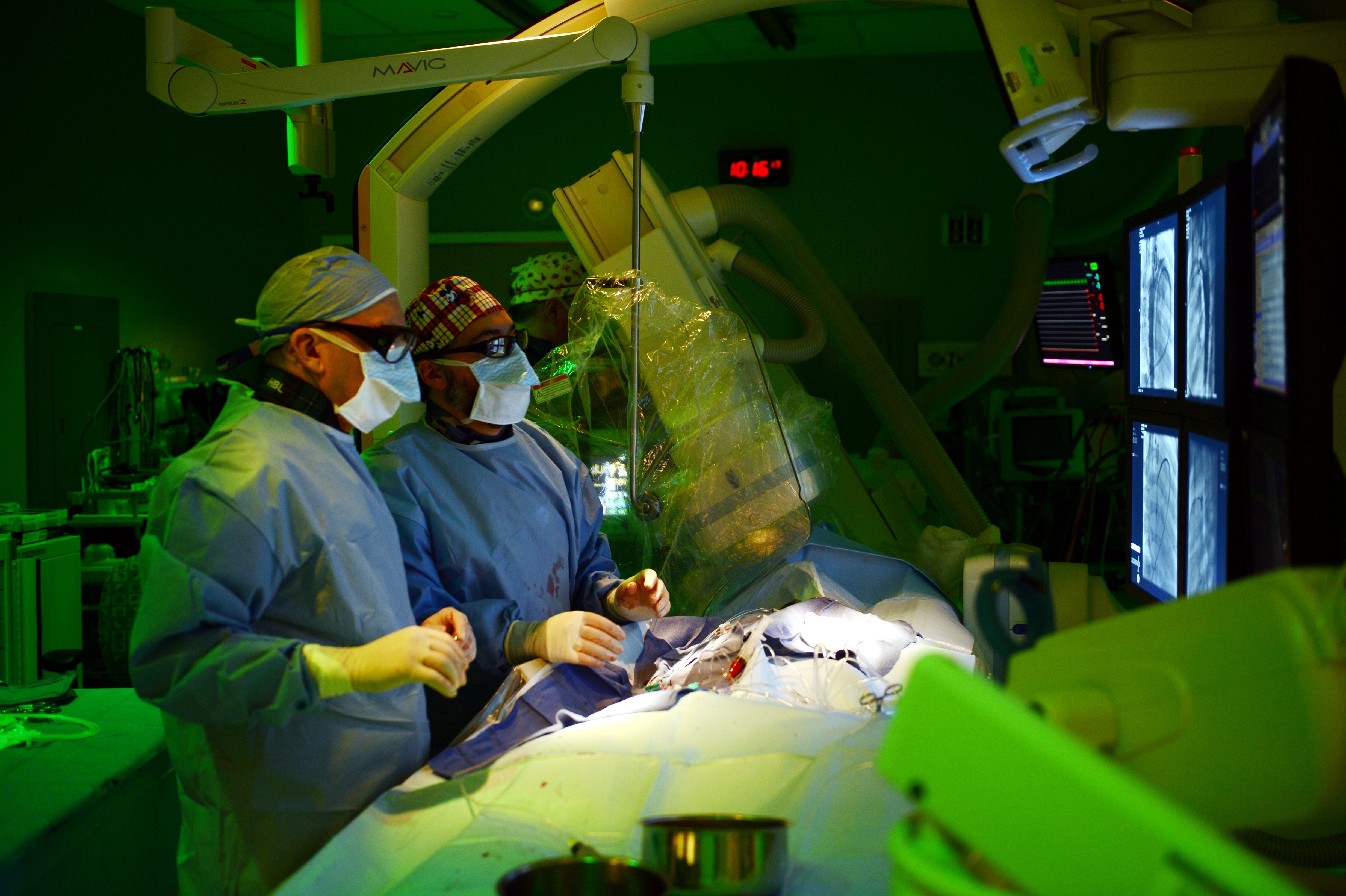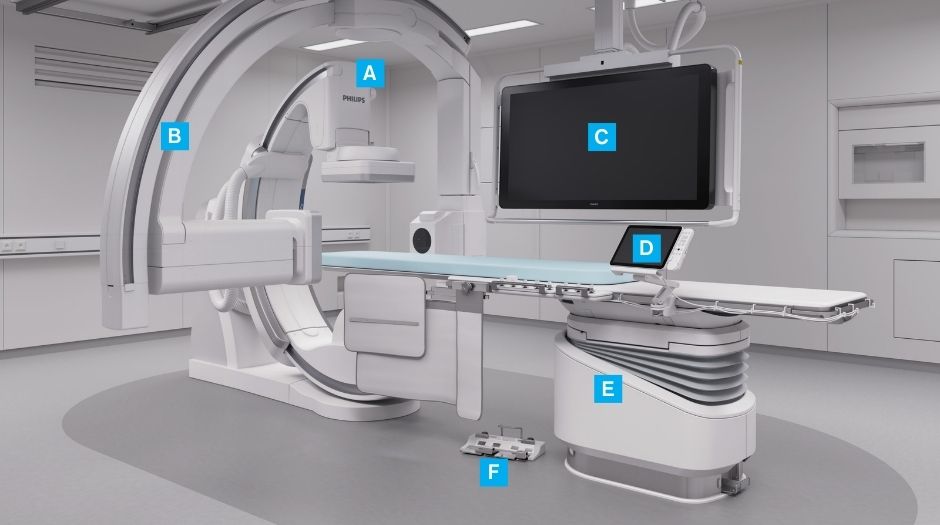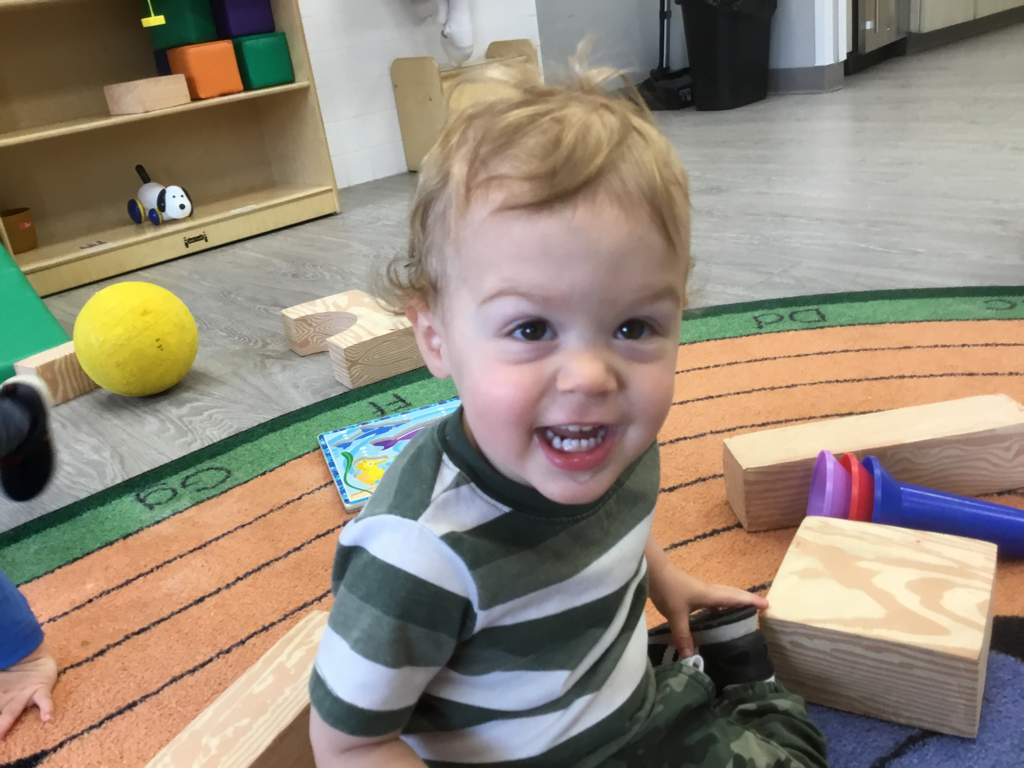There are two broad approaches to cardiac interventions. The first is a conventional operation, where the surgeon opens the body to work on a particular problem area. The second is a minimally invasive catheterization procedure. This is where the interventionalist feeds a thin, flexible tube through a tiny incision and guides it to the desired spot, then uses tools attached to the end of the tube to address problems.
Typically—as it is at Connecticut Children’s—these two kinds of procedures happen in different facilities using different equipment. Because a catheter procedure is done inside the body, the surgeon cannot directly observe what he or she is doing and needs powerful imaging equipment to guide the catheter. But sometimes an interventionalist conducting a catheter procedure discovers an issue that requires conventional surgery.

At Connecticut Children’s, when that happens, the doctor needs to relocate to an operating room, which may or may not be available. In some situations, the child would come back for a second appointment to have that surgery done, with a second round of anesthesia. If pivoting to conventional surgery is urgent, the child has to be wheeled on a gurney down a hallway to an operating room. It can happen the other way, too: a surgeon performing a conventional open procedure on a child can encounter a situation where he or she needs the sophisticated imaging a catheter lab provides. Again, the child needs to be moved, sometimes in the middle of a procedure.
A hybrid operating room combines the tools of both kinds of procedures in one place. This provides all surgeons with the high-quality imaging and surgical resources they need to help any child in their care. This type of combined equipment and space is extremely useful for laparoscopic surgeries, neurosurgeries, orthopedic procedures and traumas. Connecticut Children’s is planning to create the first pediatric hybrid operating room in New England. And the centerpiece of this leading-edge facility is the Philips Azurion 7 B20/15.
Your supports helps kids thrive.
Connecticut Children’s will be able to obtain this remarkable (and expensive) tool, and large new room to work in, thanks to our generous donors. More importantly, you are also responsible for all the many, many children who will be healed and helped and all the lives that will be saved.

Explore the Hybrid Operating Room
A
The frontal C-arm has an x-ray generator on one end of the “C” and a 20-inch x-ray sensor on the other end. Both the generator and sensor panels can move in and out of the arm, to get closer to or further from the patient as needed. The C-arm rotates in all three planes (pitch, roll, and yaw), giving access to any part of the body at any angle. And the whole unit can move forward and backward relative to the table, so it can be pulled out of the way if it’s not needed during standard surgeries. It provides standard x-rays, fluoroscopy (think of it as a live x-ray movie that creates a real-time image of any part of the body) and angiography (specialized still x-ray images that give a view of blood vessels and internal cardiac structures). It uses precise targeting and a new, very-low-dose x-ray technology to minimize radiation exposure for our patients and surgical team. This system also has the advanced programming to take a rotational picture, where the C-arm rotates rapidly around the patient creating a 3-D image of any organ or structure of interest.
B
The lateral L-arc also has an x-ray generator and a 15-inch sensor and offers positioning flexibility. By using the two units together, our surgeons will have incredible views of any area of the body, giving them unprecedented clarity as they work. Having both arms also allows for simultaneous imaging, reducing the number of scans and the amount of radiation exposure.
C
To take advantage of the state-of-the-art imaging capability, the Azurion includes a 58-inch high-resolution screen so surgeons can easily see where they are working and conduct more accurate diagnoses. It, too, can be moved to any position needed. This singular large computer screen can be customized for each physician’s preference, and even for each specialty’s preference.
D
This is the control panel for the unit. It has a touchscreen for maximum flexibility and ease of use. From here, the doctor can control every aspect of the machine. Think of it as a medical-grade iPad.
E
The table is as flexible as the imaging arms: it can be raised and lowered, tilted and rotated while the patient is safely secured in place. In combination with the arms, it allows a huge range of motion and endless options for the surgeon to work more precisely.
F
The foot control lets the surgeon control the most essential functions, like driving a car, while working on the patient with both hands.
Not pictured: Because this system is so sophisticated and complex, it requires a separate control room, where technicians sit, observing the procedure through a window, monitoring everything on their computer screens, in constant touch with the surgical team. They support the team and handle needed changes in the machine. There is also a separate room to house the array of computers needed to make this system work.
Telmo Jr.’s Story
Telmo, Jr., was born at 27 weeks. “Junior” weighed only two pounds, seven ounces and was so small he could fit in his mother Jesse’s hand.
Any baby as small as Junior faces challenges because his organs are not yet fully developed. He needed the oscillator to help his still-growing lungs. He suffered a significant and stubborn brain bleed. But his biggest problem was in his tiny heart. He had patent ductus arteriosus and was facing open heart surgery. Then Frederic Bernstein, DO, the Director of Interventional Pediatric Cardiology, offered an alternative: a brand-new technology of putting a coil in to close the hole.
Such innovative procedures can be done in the Catheterization Lab, but if and when the need arises for conventional surgery, the Hybrid OR will be there for patients like Junior.
